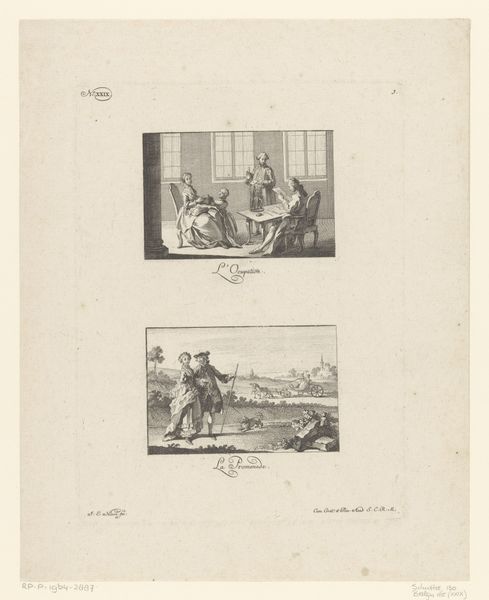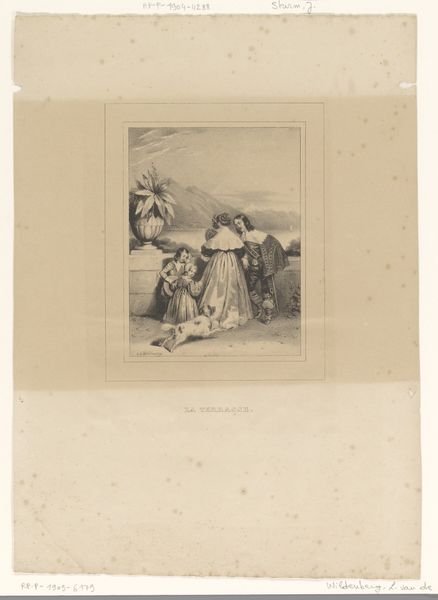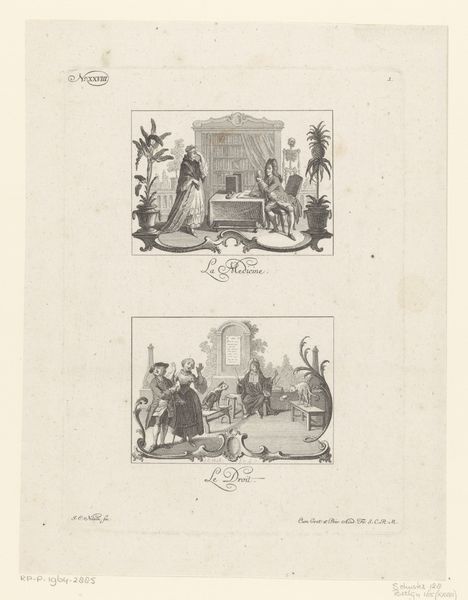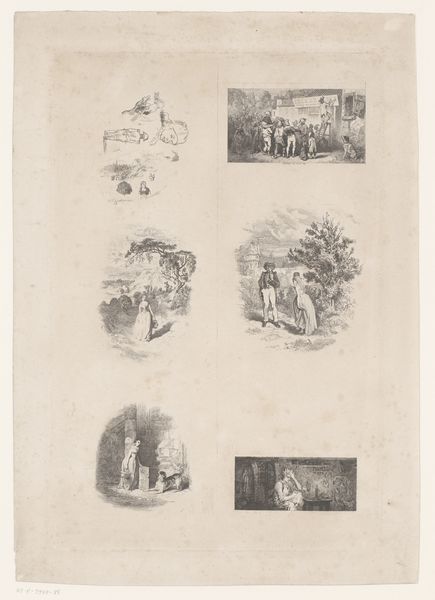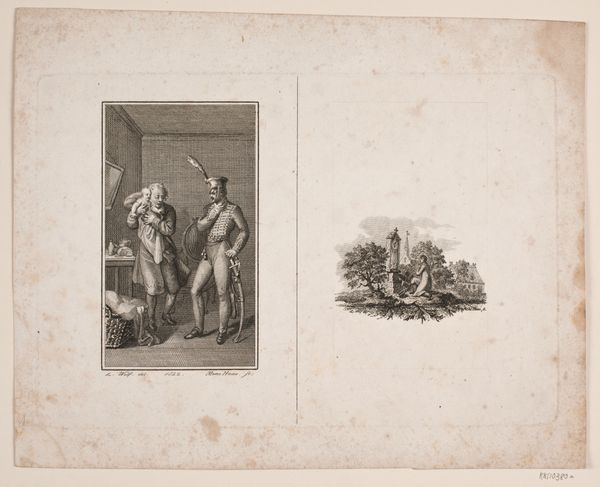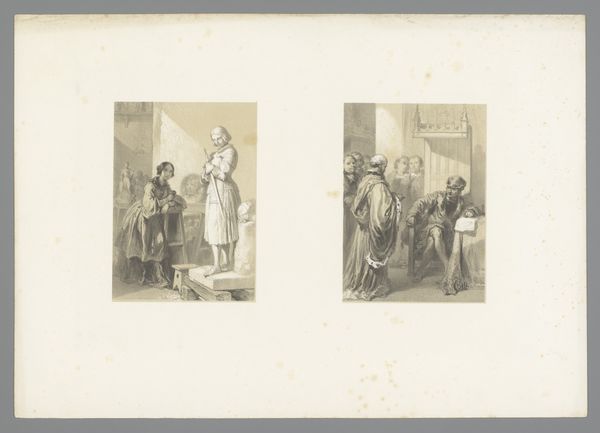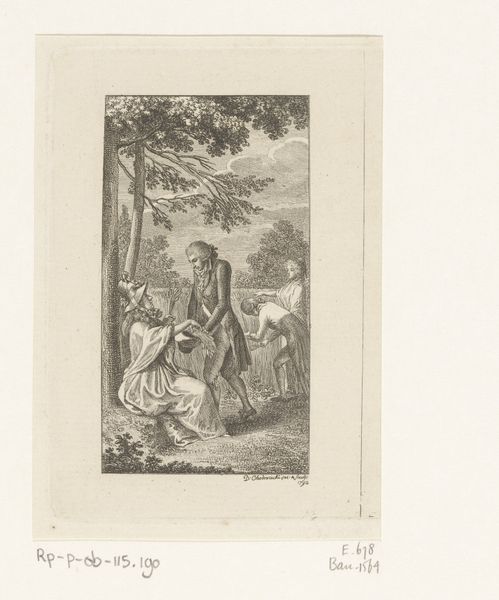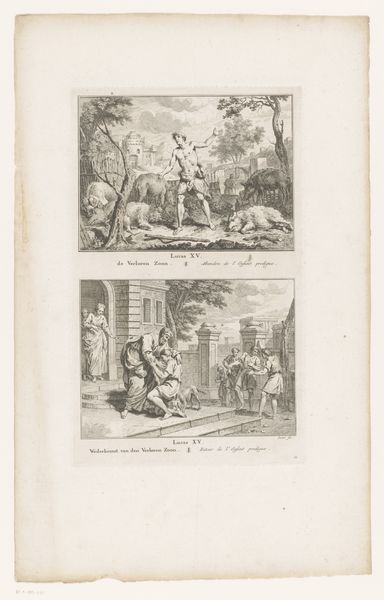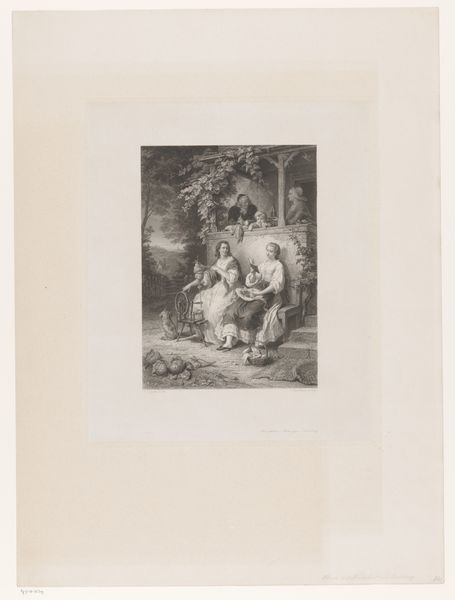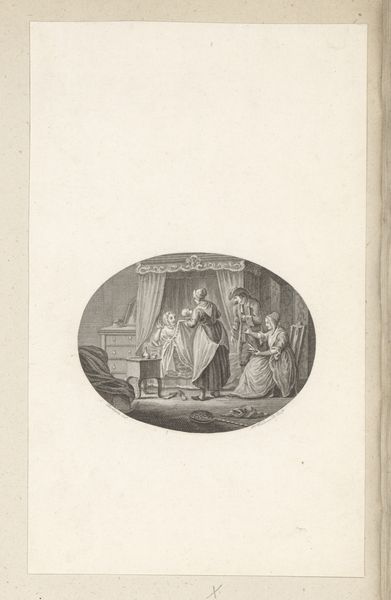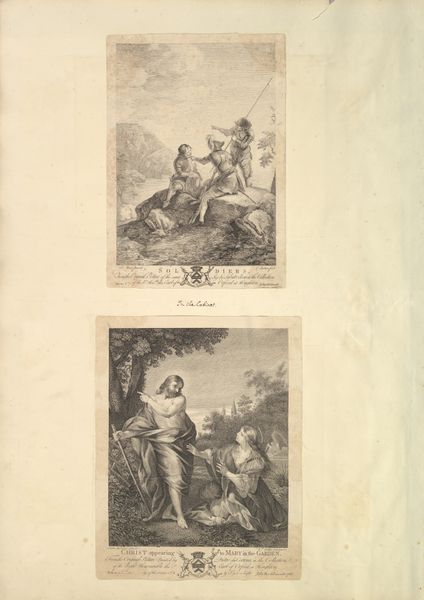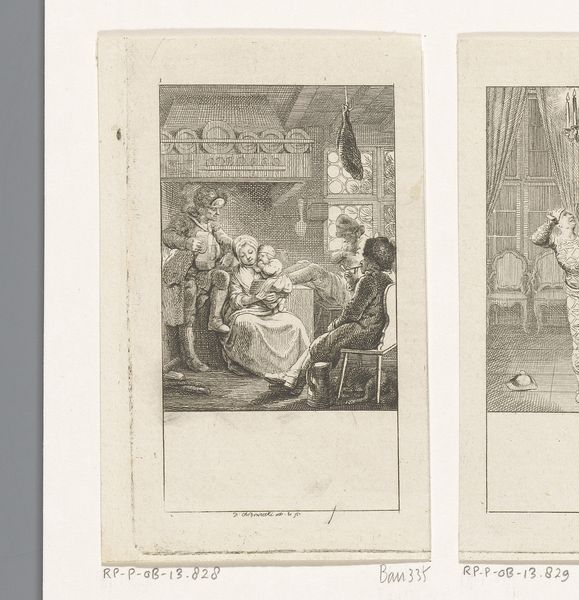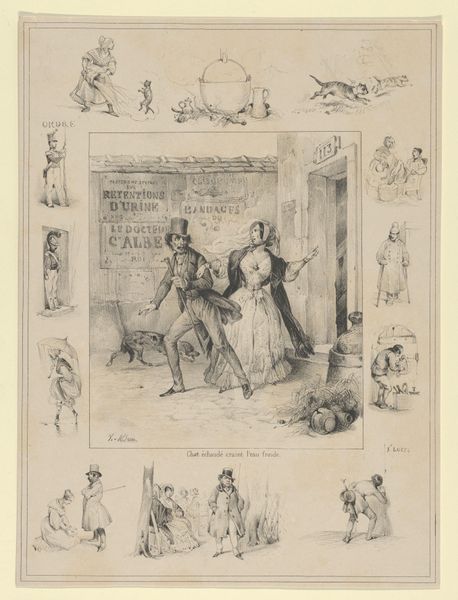
print, engraving
# print
#
landscape
#
genre-painting
#
history-painting
#
engraving
#
realism
Dimensions: height 399 mm, width 283 mm
Copyright: Rijks Museum: Open Domain
Curator: Here we have "Meisje met hond en kind op boerenerf," or "Girl with dog and child on a farmyard," a print made around 1840 by François Grenier. It resides here at the Rijksmuseum. Editor: Immediately, the subdued tones strike me, a certain stillness captured through careful engraving. It feels like a frozen moment from everyday rural life. Curator: It is an engraving, so we're dealing with the labor of the artist using tools to physically cut into a metal plate. The marks, the lines themselves, carry the meaning as much as the depicted scene. Think of the intense labor and material understanding required. Editor: Absolutely, the linear precision yields a charming interplay of light and shadow. Structurally, Grenier’s deployment of depth within the composition is interesting—the background figures fading softly. What do you make of the narrative aspect? Curator: The scenes portray genre-painting in that it depicts common folks, and elements of history painting appear within these "everyday" situations. I believe this brings an artistic intention, but, ultimately, we are also talking about representations of work, class, and social conditions in rural life, not pure entertainment. Editor: Do you think the realism serves solely to record or does it propose something more, perhaps an idealized or romantic vision of this existence? Curator: I suspect a bit of both. This would have circulated as a print. How does art reach an audience, and what does that distribution suggest? Consider what a print like this signified about accessibility and value. Editor: Fair enough. The distribution undoubtedly affects how we interpret value here. However, if we focus on its form: The textural detail, for instance—how Grenier renders the rough wood versus soft fabrics through hatching—offers an invitation into this pastoral setting. Curator: Right, and where did Grenier acquire this skillset? Who taught this person, how did Grenier get materials to work? How were their skills valued? All are vital to consider. Editor: Certainly important perspectives, even though our primary interest remains grasping the intrinsic visual organization that defines this piece, how elements such as form and tonality interact within its pictorial space. Curator: The point is how such intrinsic visual organizations serve—or subvert—external socioeconomic ones! Editor: A lovely closing statement for me as well, and in conclusion, an object is, as you said, made in the context of socioeconomic structures, but it exists with visual cues that may offer us additional access and a better formal analysis, ultimately, can exist apart.
Comments
No comments
Be the first to comment and join the conversation on the ultimate creative platform.
